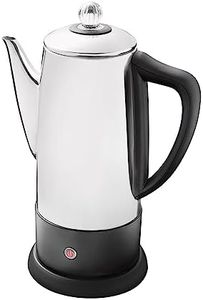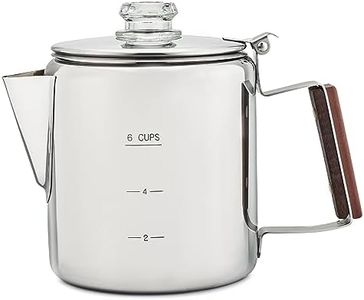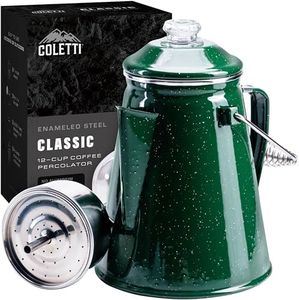We Use CookiesWe use cookies to enhance the security, performance,
functionality and for analytical and promotional activities. By continuing to browse this site you
are agreeing to our privacy policy
10 Best Percolator Coffee Makers
From leading brands and best sellers available on the web.Buying Guide for the Best Percolator Coffee Makers
Choosing a percolator coffee maker can be both fun and rewarding, especially if you love robust, old-fashioned coffee. Percolators work by cycling boiling water through coffee grounds, a process that can deliver a bold, flavorful brew. The best way to pick the right percolator is to think about how much coffee you typically make, where you plan to use it (home, camp, travel), and how involved you want to be in the brewing process. Understanding the key specifications of percolator coffee makers will help you make a choice that best fits your lifestyle and taste preferences.Capacity (Cups)Capacity refers to how many cups of coffee the percolator can brew at once. This is important because it determines whether you can make enough coffee for yourself or a group in one go. Small percolators usually make 2-4 cups, which are great for personal use or couples. Medium ones (6-8 cups) are good for small households or social gatherings, while large percolators (10 cups or more) are best for families or entertaining guests. Think about how many people typically drink coffee with you to avoid making too little or wasting coffee.
MaterialMost percolators are made from stainless steel, aluminum, or glass. Stainless steel models are durable, easy to clean, and don’t affect the taste of coffee, making them a popular choice for regular home use. Aluminum is lighter, which is handy if you plan to take your percolator camping, but it can sometimes impact taste and durability. Glass allows you to see the brewing process, which helps with timing, but can be more fragile. Choose the material based on your need for durability, portability, and how much being able to watch the brewing matters to you.
Heating MethodPercolators can be either stovetop or electric. Stovetop versions are heated directly on a burner or campfire and give you more control over the brewing process, which is great if you enjoy hands-on coffee making. Electric percolators are more convenient—they simply plug in, heat themselves, and often have automatic shutoff for safety. If you want easy, set-it-and-forget-it coffee, electric is the way to go. If you enjoy being more involved or want to use your percolator outdoors, a stovetop model may be better.
Filter TypePercolators use either a permanent or paper filter. Permanent filters are usually metal and built into the percolator, saving you money and hassle, but they can let some fine grounds through, resulting in a bolder brew. Paper filters are disposable, catching more grounds and providing a smoother cup, but you need to keep them stocked. Decide whether you value convenience and a cleaner cup or saving on disposable items and enjoying a stronger coffee.
Ease of CleaningCoffee makers need regular cleaning to maintain taste and function. Some percolators can be washed in the dishwasher, while others require hand washing. Models with simple designs and fewer parts are easier to clean, while more complex ones might take a bit more effort. Consider how much time you’re willing to spend on cleanup and whether dishwasher safety is important to you.
Brew SpeedBrew speed is how quickly your percolator can make coffee. Stovetop models usually take a bit longer (10-15 minutes), while electric ones can be faster. If quick coffee in the morning is important to you, check for brew times and choose accordingly. If you're okay with waiting a bit for a more hands-on process, speed might not be as critical.
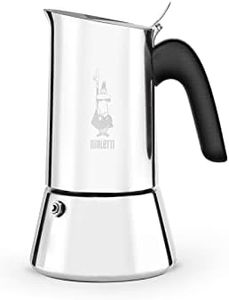
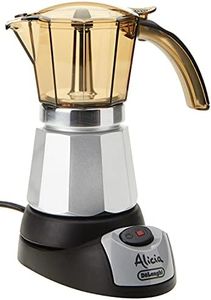
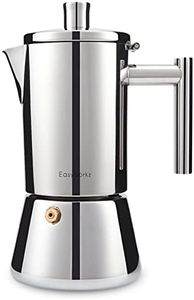
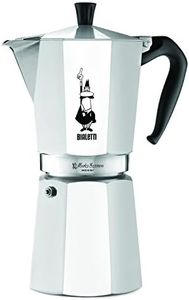
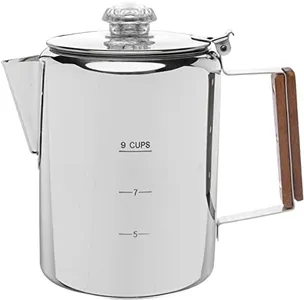
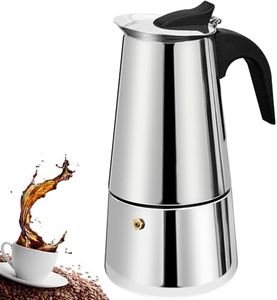
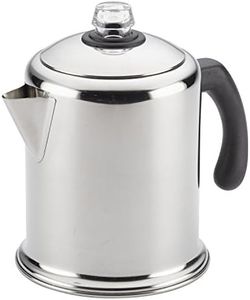
![COLETTI Classic Percolator Coffee Pot — Coffee Percolator, Camping Kettle – The Original Camping Coffee Pot, Now Modernized – For Campsite Brewmasters Everywhere [Black Enamel, 12 Cup]](https://images-proxy.bestreviews.guide/V-xLyGFSEj_T7mZyqeCzdZMYuCw=/0x300/https://m.media-amazon.com/images/I/51s4Iiea6UL._AC_CX679_.jpg)


